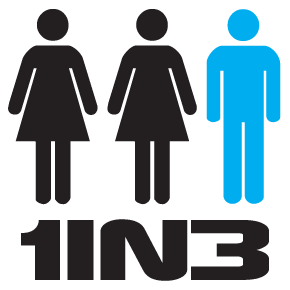Newer Perspectives on Domestic Violence (USA)
Domestic Violence (DV) and all its consequences is a terribly sad, troubling, and potentially destructive part of our national life and identity. DV not only poses physical dangers but also takes a terrible toll on families and the important relationships of our lives. One would have thought that we, as a nation, would use reason, science and logic to solve—-as much as full solution is possible—-this scourge. Perhaps naturally and understandably, considering how emotional these issues are, science, perspective, study, and thoughtfulness have often been put aside while warring camps, political concerns and emotions have carried the day. Domestic violence can be seen in many different ways but certainly a medical/scientific approach is warranted, with much to offer if real solutions are to be found.
A variety of women’s groups have seen it as central to their mission to highlight domestic violence, and have generally couched the issues in a gender specific way. Women, in their view, are the victims of DV; and men, the perpetrators. By extension, the more radical of these groups saw all men as potential abusers, waiting for certain conditions before striking. (“All men are potential rapists and that’s all they are”, said Marilyn French, author of The Women’s Room).
In the view of such groups, there was no room for studies of varying motives, circumstances, or perpetrators. The act was criminal, and the motivation was assumed to be exclusively the patriarchal attempt at dominance over women. By extension, since these were criminal acts, they should be dealt with through the criminal justice system; eg, by means of arrests, restraining orders, and the registration of males accused of being “batterers” (accused, not proven). Furthermore, in this view, these alleged batterers should be removed from their homes, their mates, and their children. Increasing criminalization was thus seen as the means of preventing and coping with DV.
Men were seen as hopelessly aggressive by nature -- predatory, and controlling. Many men reacted by joining the cause and becoming the “enforcers”--outdoing women in their zeal to protect womanhood and rid society of batterers at all costs. Other men reacted passively, unaccustomed to being adversarial toward women. And still others reacted sympathetically, but were outraged by the attack on civil liberties and constitutional rights such branding of men as batterers entailed, often with minimal due process. (“Men who are unjustly accused of rape can sometimes gain from the experience” said a Vassar College Assistant Dean of Students). Many men felt themselves, as a group, being degraded and bashed, much as blacks had been a generation before-- when, if you were black, you were a priori deemed capable of any crime, any aggression. Men felt themselves discredited--many of whom had fought for years, and through their families, for generations, for equality and justice for all.


